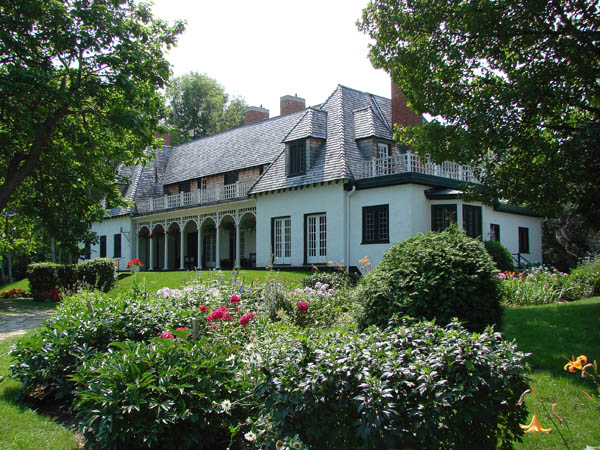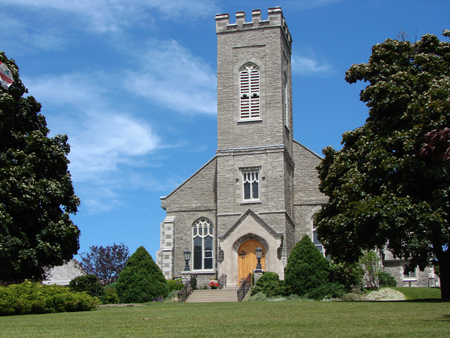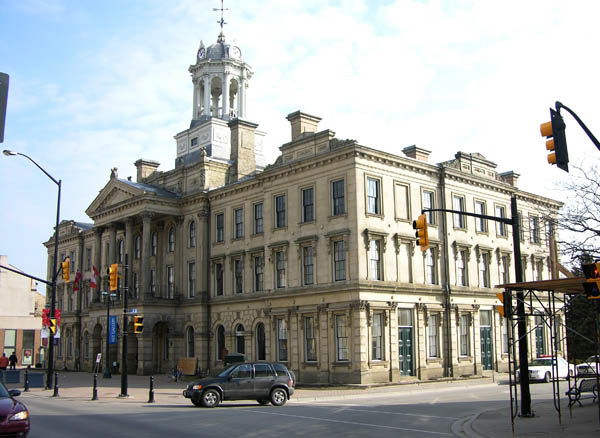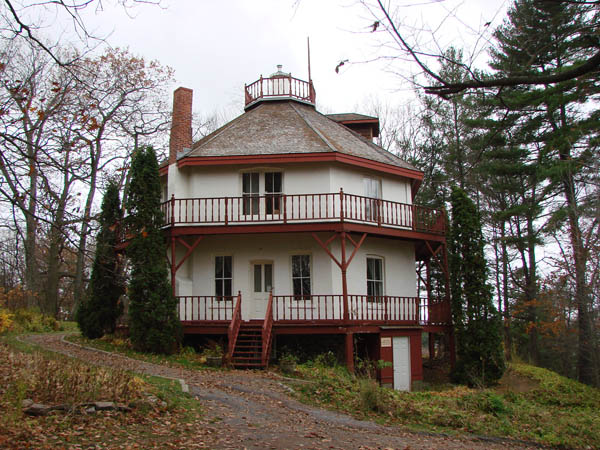Menu
Middlesex County Courthouse, London
John Graves Simcoe's selection in 1794 of the forks of the Thames River as the future capital of Upper Canada resulted in the founding of London. In 1826, the existing courthouse and jail in Vittoria were destroyed by fire and, after lobbying for a more central location for the district's capital, the town site at the forks of the Thames River was chosen.
A building commission was appointed including as a member Colonel Thomas Talbot. In 1827, the commission accepted the design proposal of master builder and architect John Ewart of York (Toronto). A small wooden building, later used as a school, provided temporary court and jail space while the new facilities were being built. Situated on a hill overlooking the Thames River, the courthouse became an immediate landmark and focal point for community events – including markets, fairs and hangings. In 1842, a jail was added and, in 1850, the District of London was reorganized as the County of Middlesex. Rapid growth required the building of a separate but nearby County administration office in 1861 and a Registry Office in 1876. This building is associated with 19th-century judicial, governmental and administrative development in Ontario.
Designed with Gothic detailing, the courthouse displays a classical compositional form with a central pavilion and two side wings in the form of prominent octagonal towers at each corner. It is believed that the courthouse was partially modelled after the ancestral home of Thomas Talbot, Malahide Castle, near Dublin, Ireland and is also referred to as Regency Scottish Gothic with the west façade recalling the Scottish castle of Tantallon overlooking the North Sea. The courthouse features a stone foundation housing the cell blocks, squared mortar-covered brick walls to give a stone-like appearance, octagonal towers, a polygonal bay, tall lancet windows, secondary square windows and distinctive crenellations. Extensive additions were made to the east façade of the courthouse in 1878. Designs were attributed to Thomas Tracy who was associated with the city engineer’s office, and Charles Holmes, the County Engineer. The additions to the Ridout Street façade resulted in a structure approximately 30 meters by 30 meters (100 feet by 100 feet. The new façade included a new set of corner towers modelled on the older ones, as well as a new and dominant central tower.
The building was designated a National Historic Site in 1955. In 1980, the City of London designated the courthouse under the Ontario Heritage Act and, in 1981, the Ontario Heritage Trust secured a heritage easement on the building.




